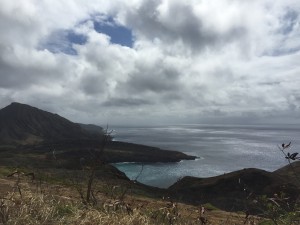October 12, 2015
Earth Science Education For All
Posted by elandau
Earth Science Week is 11-17 October, and Monday’s focus is Earth science literacy. Recent natural hazards, such as Hurricane Joaquin and the flooding in South Carolina, are evidence of the importance of Earth science education and knowledge. Being science literate enables scientists to provide accurate weather forecasts, and also allows society as a whole to understand and properly react to those forecasts.
Earth science research and education does not only impact weather forecasting. Energy development, resource management, and climate change are critical geoscience issues that impact society. Policy dialogue concerning such complex issues must be supported by Earth science to build effective, sustainable solutions.
Earth science affects our daily lives, yet most elementary, middle, and high school students do not receive adequate Earth science education. A report on the current status of K-5 geoscience education shows that only 15 states have standards for educating their students about future careers in the Earth sciences. Urgent needs for development of renewable energy and solutions to climate change require strong Earth science education and student awareness of future career paths. Even more troubling is that 18 states do not have a time requirement for science curriculum, meaning the amount of time dedicated to science as a whole is reliant upon the discretion of individual teachers.
The short-comings of Earth science education is not unique to elementary education standards but appears in middle and high school standards as well. Only two states require a year-long Earth or environmental science course to meet graduation standards, while some integrate Earth science concepts into other science courses. Assessment and review of all curriculum is essential to maintain quality of instruction and topics. All 50 states assess the quality of their life science concepts but only 34 states assess their Earth science concepts.
One reason for this lack of equality across science disciplines is that current STEM (Science, Technology, Engineering, and Mathematics) education policy does not emphasize Earth science curriculum. Current legislation focuses on life, physical, and computer sciences as priorities for teaching in the classroom. Another potential cause for minimal Earth and environmental education is the small number of university students pursuing degrees in these subjects. According to the 2009 census only 16% of STEM degrees were in the “biological, agricultural, and environmental sciences,” with only a fraction of those degrees being in the Earth or environmental sciences. A lack of advanced Earth science education and expertise makes it difficult for teachers to accurately teach Earth science concepts to their students.
Earth Science Literacy Day emphasizes the importance of Earth science education and the need to improve elementary, middle, and high school students’ access to reliable Earth science curriculum. Follow #EarthSciWeek or #ScienceIsEssential to learn more about Earth Science Week and the current short-comings of K-12 Earth science education. If you would like to take action to improve Earth science literacy and education please visit Sharing Science to find Earth Science Week activities and suggestions for impacting STEM education policy.


